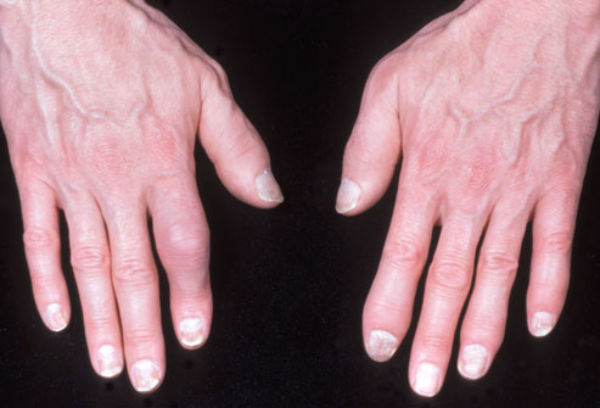
Are you experiencing pain, stiffness or swelling in your joints? Are your joints red or warm to touch? Have you seen any changes in your nails liking pitting or separation from the nail bed? Then beware. This may be a painful and troublesome ailment called psoriatic arthritis. It is a chronic disease, which causes inflammation of the skin and joints, both at the same time. Psoriasis is generally characterized by patches of scaly raised red skin and arthritis is a kind of joint inflammation. A combination of this two is called psoriatic arthritis.
If you feel any of the above symptoms, then consult your doctor immediately. With proper care and medications, you can definitely overcome this disease. Here is a description of some treatments that can be followed for this disease.
1. Drugs
Generally, the initial treatment includes non-steroidal anti-inflammatory drugs or NSAIDs like ibuprofen and naproxen. NSAIDs can relieve you from the pain and inflammation caused by psoriatic arthritis for a long period but it also has various side effects. They include stomach irritation, peptic ulcers, and sometimes bleeding of the mucus layer, which forms a lining and protects the inner stomach. However, by taking certain over-the-counter medicines or prescribed drugs like cytotec and omeprazole along with the NSAIDs, you can prevent the side effects and soothe your stomach.
Corticosteroid, another strong anti-inflammatory medication, can also be used for the treatment of psoriatic arthritis. It can be taken either by mouth or by injecting directly into the joints or muscles in order to lessen the intensity of the pain and inflammation. The steroid called prednisone is the most commonly used drug in the treatment of this disease. It also has its side effects. Administration of prednisone can cause osteoporosis, weakness of the joints, cataracts, weight gain, and diabetes.
Disease modifying antirheumatic drugs (DMARDs) can be used to slow down the progress of psoriatic arthritis. By stopping the disease progression, some relief can be attained. Generally, the DMARDs are more strong and powerful than the NSAIDs, but the former is slower in action. Some commonly used DMARDs are methotrexate and sulfasalazine. Certain biological drugs like enbrel, remicade, humira and simponi are also used.
Some other prescribed alternative medications are retinoids, PUVA that is a light-sensitizing medication, cyclosporine, and azathioprine. These are given after considering the severity of the disease.
2. Role of exercise
A regular and moderate exercise regime can really give you the desired relief from the pain and joint stiffness caused by psoriatic arthritis. A combination of cardiovascular and strengthening exercise will definitely work. Exercise will give you relief from the symptoms of arthritis, increase muscle strength and flexibility, help in weight loss, which in turn will reduce the pressure on the joints, improve joint movement, and boost your endurance level and cardiovascular fitness.
3. Water therapy
Water therapy also known as hydrotherapy or aqua therapy, is a kind of exercise plan that is carried out in a large pool of water. Water therapy helps in easing the painful joints caused by psoriatic arthritis. This happens because water helps in reducing the weight off the affected areas. In addition to this, proper recreational exercise may also help, but it should always be preceded by a program of range-of-motion, aerobic, and strength exercises in order to reduce the possibility of any kind of injury. The exercises should always be performed under the recommendation or training given by your doctor, physiotherapist or other health professionals. This is very important because wrong or improper exercises will worsen your problem.
4. Role of heat or cold therapy
Heat and cold therapy can give only temporary relief to the pain and swelling related to psoriatic arthritis. It involves alternative application of heat and cold to the affected joints. Heat therapy is given by applying moist heat with the help of a warm towel, or a hot pack to the affected areas. A warm shower also helps in relaxing the painful muscles and reducing the inflammation. Cold therapy is given by applying an ice bag or frozen vegetables tied in a cold towel on the joints to reduce the swelling and provide much needed relief of the pain by making the area numb.
5. Surgery
Synovectomy, a kind of surgery, helps when everything else fails in curing psoriatic arthritis. It helps by restoring the joint functions or by removing the inflamed soft tissues of the joints. Another process called Arthroplasty or more simply joint replacement surgery is required in some serious cases, wherein synthetic joints are used to replace the damaged ones. Areas such as toes, fingers, wrists, and ankles need joint fusions if a medicine does not provide relief. Surgery, the last step of treatment can give more movement, less pain and an improved physical appearance to the affected area.




